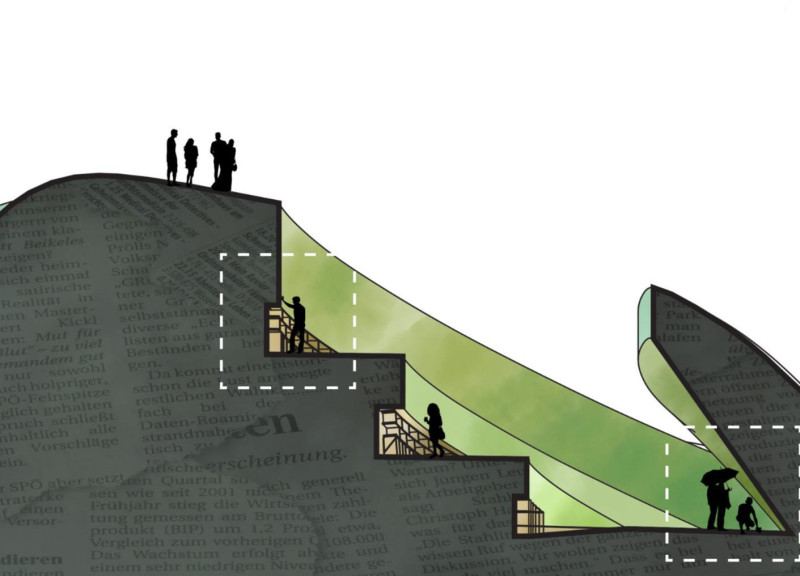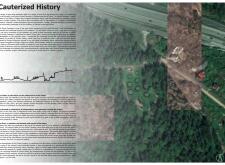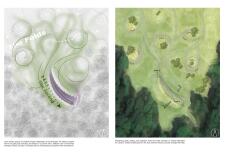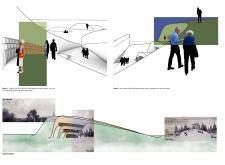5 key facts about this project
The Forest Cemetery in Latvia serves as a space for remembrance and reflection. Located in a culturally significant setting, it recognizes the presence of death while also celebrating the essence of life. The design aims to integrate historical narratives into the landscape, creating various areas that encourage public engagement and personal contemplation, thereby honoring the rich past of Latvia.
Design Elements
The Folds form the main entry point into the cemetery, featuring sculpted landscape forms that represent the challenges faced in Latvian history. Mounds and ridges are shaped to invite visitors to explore, providing spaces for rest and relaxation. Educational plaques throughout The Folds enrich the experience, offering important insights into crucial moments in Latvia's narrative.
The Ascend is a notable incline that reaches a height of sixty feet. It symbolizes the early days of Latvian independence and provides visitors with an elevated view of the cemetery. Climbing The Ascend not only offers a physical journey but also represents a metaphorical ascent toward hope and renewal, encouraging visitors to reflect on the resilience of the Latvian people.
The Scar illustrates a significant historical disruption, highlighting the effects of World War I on the development of this cemetery. It is characterized by a deep split in the ground that guides visitors toward the columbarium. This structure includes three terraces for the storage of urns and a dedicated space for memorial services. The Scar fosters an atmosphere focused on healing and contemplation, inviting quiet reflection.
The design integrates the columbarium with its surrounding landscape, creating a heightened sensory experience for those who visit. The combination of natural and constructed forms invites exploration and contemplation. As visitors move through the space, varying light and shadow patterns play across the landscape, enhancing the sense of reflection and solemnity that the cemetery embodies.






















































